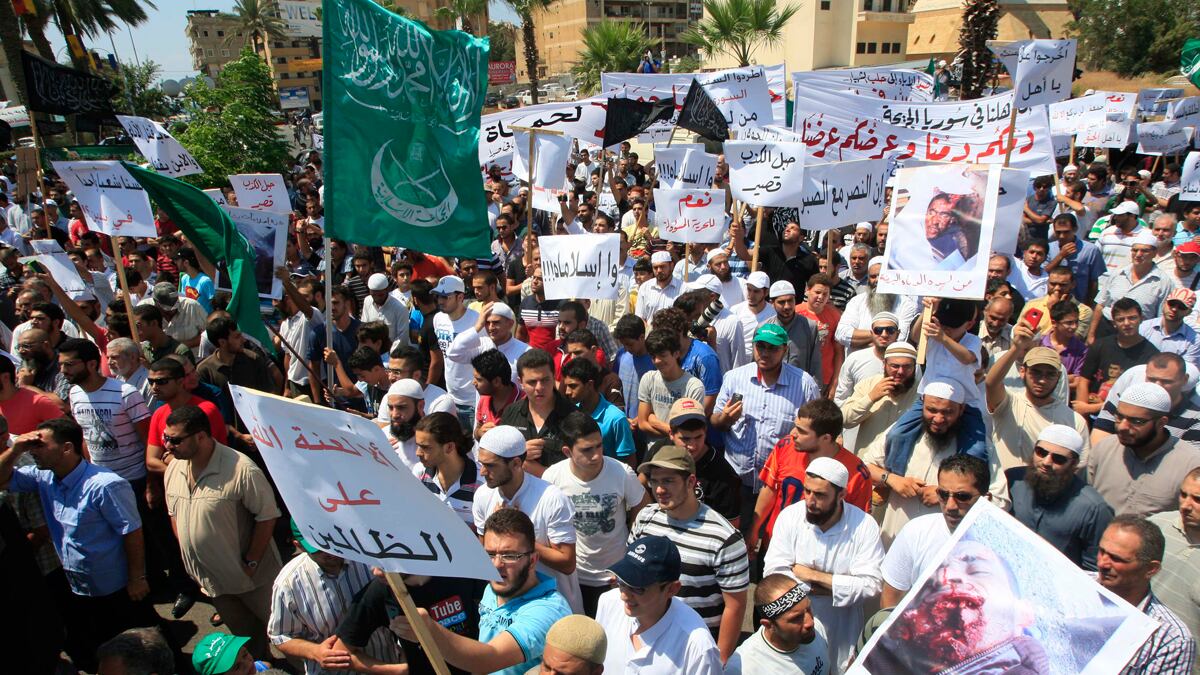It’s hard to imagine a more cynical ploy. As millions of Muslims prepared for Ramadan in Syria last week, the regime was planning for something else entirely: a military assault. Hundreds of troops and tanks laid siege to Hama, Homs, and a handful of smaller cities in an all-out effort to squash the five-month old uprising that has nearly paralyzed the country. On Thursday, the regime felt confident enough they had crushed the protests that they took a handful of Turkish journalists for a look at Hama, one of the centers of the uprising. The journalists reported seeing heavily damaged buildings and deserted streets. It wasn’t George W. Bush on an aircraft carrier with a “Mission Accomplished” banner, but the regime seemed to be gloating all the same.
The regime just got a reality check. Protests sprang up in more than half a dozen cities on Friday, including Hama, according to Syrian human-rights activists. And, tellingly, thousands of demonstrators also came out in Damascus and Aleppo, the two biggest cities in the country that have been largely quiet. The Ramadan crackdown completely backfired. “The violence has only increased the anger toward the regime,” says Rami Nakhle, a prominent Syrian activist who now lives in Lebanon. “And it’s made the people want to break the chains of oppression.”
Demonstrations started early on Friday with some protestors in Homs and the suburbs of Damascus hitting the streets after the fajr, or dawn, prayers, according to the Local Coordination Committees, an umbrella group of opposition activists. But protests mushroomed after the Friday prayers with thousands of demonstrators pouring into the streets in cities across the country. The Syrian military and security services also spread themselves out for a violent, countrywide crackdown, killing at least 15 people. There were reports of soldiers opening fire on crowds in Deir al Zour, as well as Aleppo. Protestors were also attacked in border areas near Turkey and Lebanon. A resident of Wadi Khaled, a small Lebanese town near the border, who asked not to be identified because he feared retaliation from Lebanese authorities, said he could hear heavy shelling from the Syrian side of the border all day.
“The regime has not been learning,” says Peter Harling, a project director with the International Crisis Group who works on Syria. “They’re just doing more of the same.”

The crackdown on Friday came on the heels of strong diplomatic pressure from neighboring Turkey as well as Saudi Arabia. Secretary of State Hillary Clinton also ramped up the pressure. “President [Bashar] Assad has lost the legitimacy to lead and it is clear that Syria would be better off without him,” she said at a press conference in Washington on Friday.
The size and scope of the demonstrations on Friday, after a prolonged crackdown, are a clear sign that the protests aren’t going to be snubbed out by violence. In fact, the violence seems to be shaking the regime’s own base of support. “The regime is losing ground. It’s losing support from the business establishment. There’s a lot of frustration within the regime,” says Harling. “Many people who believe in reform and said Bashar should be given a chance now have lost any kind of faith in the reform process. What you have is people who are supportive of the regime but in a hysterical kind of way because they feel personally threatened.” The cracks are already showing.






